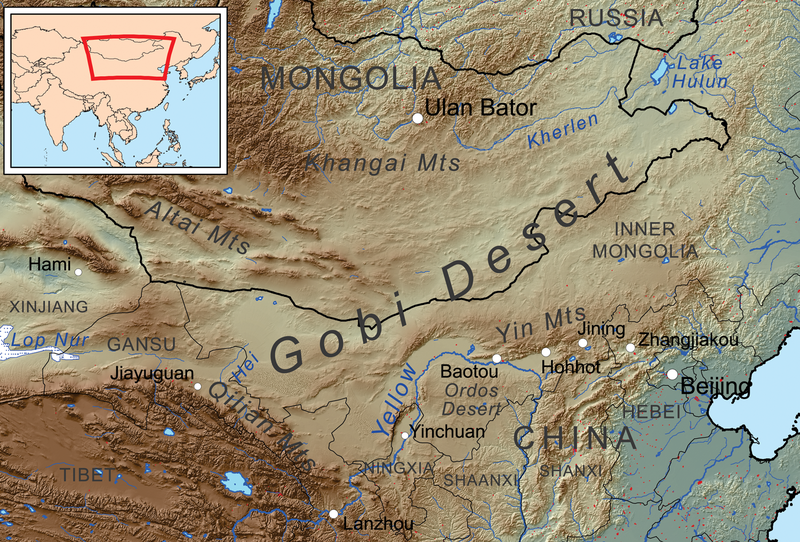Habitat
The first fossils of Velociraptor mongoliensis were found in 1923 in the Mongolian desert, embedded in sandstone. V. mongoliensis lived in the Nemegt Basin of the Gobi Desert. During the Cretaceous Period, the Nemegt Basin provided a suitable, semi-arid habitat to sustain life for many organisms, including V. mongoliensis. The Gobi Desert is a large plateau located in east-central Asia. Although the desert is now mostly covered in sand, at the time V. mogoliensis lived, it was a desert-like environment with some streams and plantlife. (Jerzykiewicz and Russell. 1990.) While it is in this specific area that our particular species’ fossils, V. mongoliensis, has been found, there are relatives within the ingroup family of Dromaeosauridae that have been found in many other areas around the globe. For example, a new species discovered in 2009, Albertonykus borealis, was found to have a habitat in present day Alberta near the herbaceous Red Deer River (Longrich and Currie. 2009). Another, Pyroraptor olympius, was discovered in La Bouchard, France (Allain and Taquet. 2000). This family is very versatile, and had become acclimated to many different areas.

To get an in depth look on Velociraptor's form and function, click
the link!